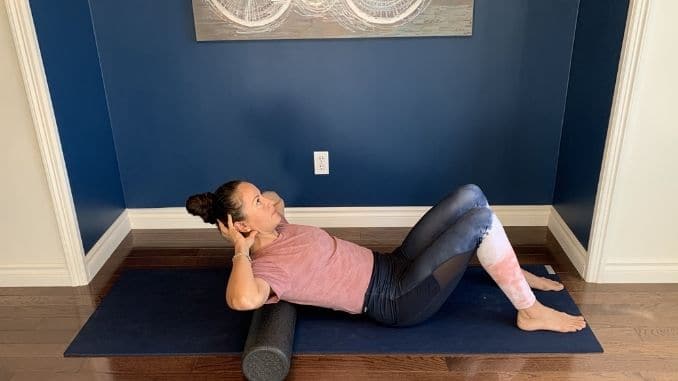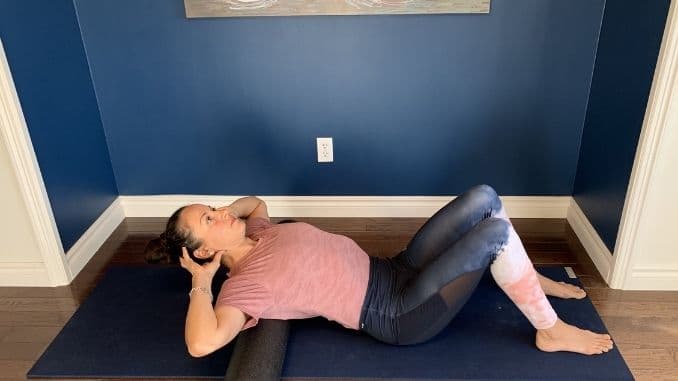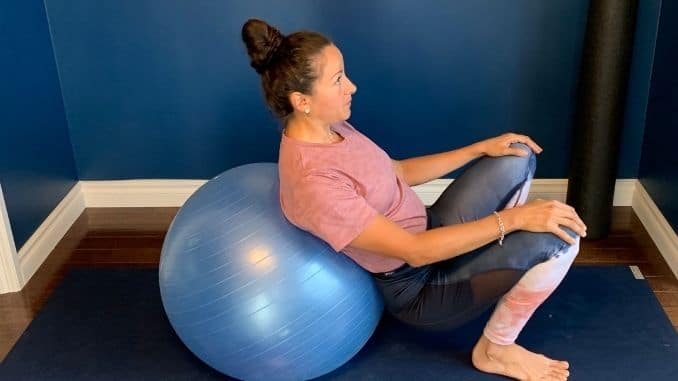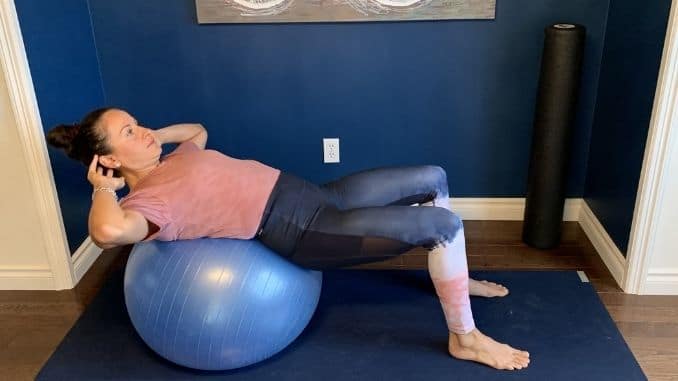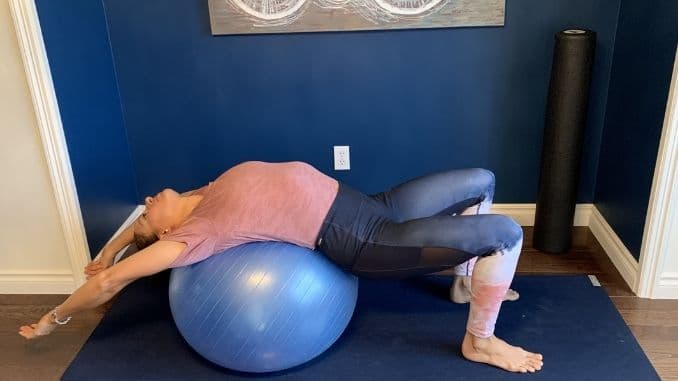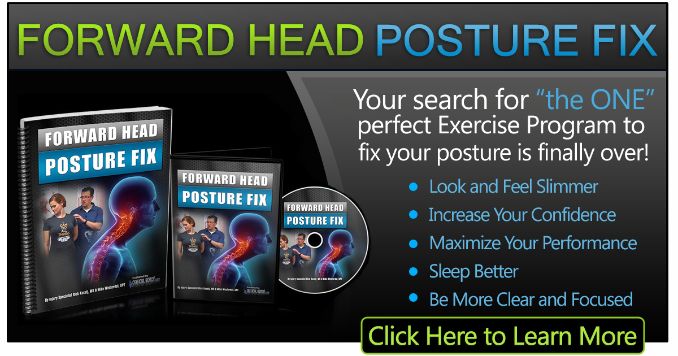Do you slouch forward when you sit? Or get hip and back pain from long days of sitting? You are not alone. Unfortunately, most people sit far too much, and sitting for prolonged periods often leads to poor posture. Spending time looking down at your phone or computer can also cause poor posture. When you sit, the muscles on the front of your body, such as your chest muscles and hip flexors, get shorted and tight. When these muscles are tight, they will continually pull your shoulders forward and into a position of poor posture. At the same time, the muscles on the back of your body, such as your glutes and spinal extensor muscles, become lengthened and weak. The muscles on the back of your body are no longer strong enough to keep your body in the proper upright position. These muscle imbalances can lead to all sorts of problems, from discomfort in your body to full-blown injuries. Bad posture can lead to repeated pressure on the spine, which can in turn cause pain. When you slouch, your muscles and ligaments have to work very hard to keep you balanced. Overworking these muscles can lead to pain and tension.
Most of us will not stop sitting anytime soon, so it is important to regularly perform posture correction exercises. The exercises in this article will help you open up the muscles on the front of your body, reversing the position you are in when you are sitting. This will allow these muscles to relax so they do not pull your body forward into that poor posture position. The exercises in this post will also work to strengthen the back of your body, engaging the muscles needed to keep you in a position of good posture. 
The first time you try out these exercises, go through all of the exercises once. See how you feel the next day, and if you feel good, start to work your way up to the recommended sets and repetitions. Remember to always start new exercises gently, not forcing your body into any positions that cause pain. You should be able to take full deep breaths throughout all of the exercises. If you can’t, this is a good signal for you to ease off a little bit.
1. Angel Arms on Foam Roller
The foam roller will be used in two exercises in this post and is a great way to open up your chest and shoulders. If you do not have a foam roller, you can roll up a blanket or towel instead.
Begin by lying on the floor with the foam roller under your spine vertically. Your head should be supported by the foam roller. Bend your knees and keep your feet flat on the floor. Position your arms along your body with your palms facing up. Keeping your arms slightly bent, begin to raise your arms overhead, drawing two semi-circles along the floor with your hands. Make sure your lower back does not arch off the roller. Lower your arms slowly to the starting position, drawing semi-circles along the floor in the opposite direction. This is considered one repetition.
Modifications: To make this a lighter stretch, bend your elbows more. You might also not be able to move your arms through the full range of motion, and that is perfectly fine. To make this stretch more intense, hold light dumbbells or other weights in your hands to gently open up the chest and shoulders further.
Perform 3 sets of 10 repetitions.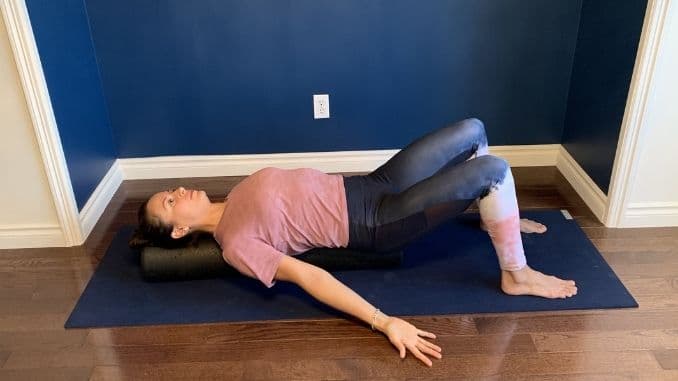
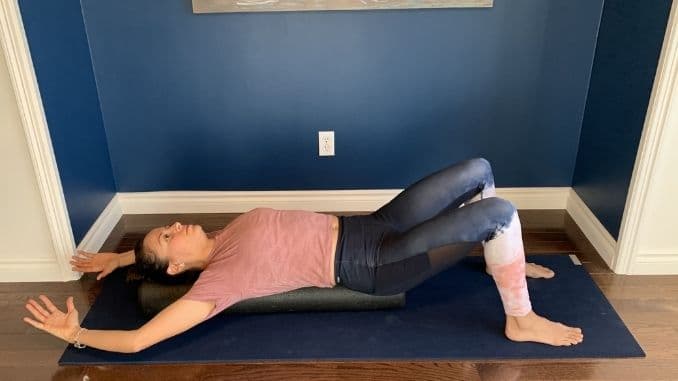
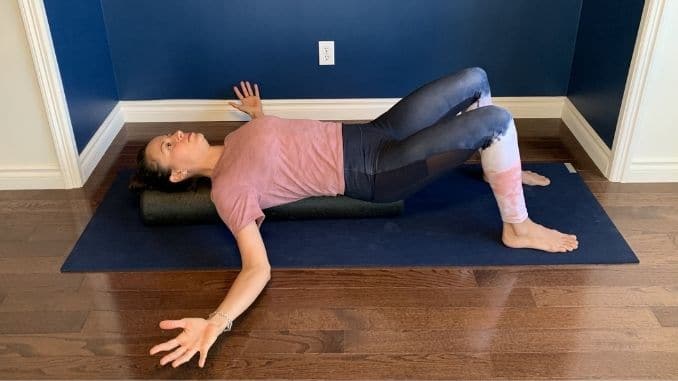
2. Upper Back Arches on Foam Roller
This exercise makes use of the foam roller again, this time focusing on the mobility in the upper back. Remember that you can use a rolled-up blanket or towel if you do not have a foam roller.
Begin by lying on your back with the foam roller under your upper back, in line with your shoulders. The foam roller should be lying perpendicular to your spine. Bend your knees and keep your feet planted on the floor. Position your hands at your head and sit your upper body up slightly. Begin to slowly lower your upper body, arching your upper back over the roller. Take your time and only arch back as far as is comfortable. You do not want any pain in the neck. Hold for a second, then slowly sit back up to the starting position. You can support your head and neck by keeping your fingers on the sides of your head. This is considered one repetition.
Modifications: To make this exercise easier, do not arch back as far. Keep your head supported with your hands. To make this exercise more challenging, straighten your legs. Be careful with this modification and always make sure there is no pain in the back or neck.
Perform 3 sets of 5 repetitions.
3. Front Body Opener on Stability Ball
This stretch uses a stability ball. If you do not have a stability ball at home, most gyms or fitness centers will have one. This stretch is great for opening the entire front body, including the chest, shoulders, and hips.
Begin in a deep squat position with the stability ball under your back. Begin to press into your feet to push your body back over the top of the ball. Raise your arms overhead and pause here, arching your spine.
Modifications: If this stretch is too intense, do not arch your body all the way over the ball. You can also leave your arms along your body or use your hands to support your head. To make this stretch more intense, hold light dumbbells or weights in your hands to encourage a deeper opening through the front of your body.
Perform 3 sets of 1 repetition, holding each repetition for 30 seconds.
4. Spine Extension
This exercise strengthens the spinal erector muscles, which help keep the spine upright and prevent you from slouching forward. Strengthening these muscles is essential for good posture.
Begin by lying face down on the floor with your arms along your sides and your palms facing upward. First, lift your arms up toward the ceiling. Then, lift your chest off the floor. Keep your gaze facing down to protect your neck. Pause for a moment, then lower down slowly. This is considered one repetition.
Modifications: To make this exercise easier, start with your palms on the floor under your shoulders. Use your arms as much as you need to assist you in lifting your upper body off the ground. Keep in mind that you do not actually have to come off the floor – it is about engaging the muscles in your back. To make this exercise more challenging, try to lift your upper body off the floor as far as possible.
Perform 3 sets of 5 repetitions. 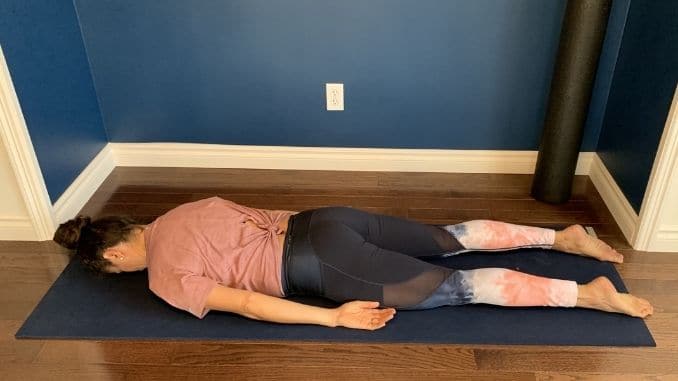
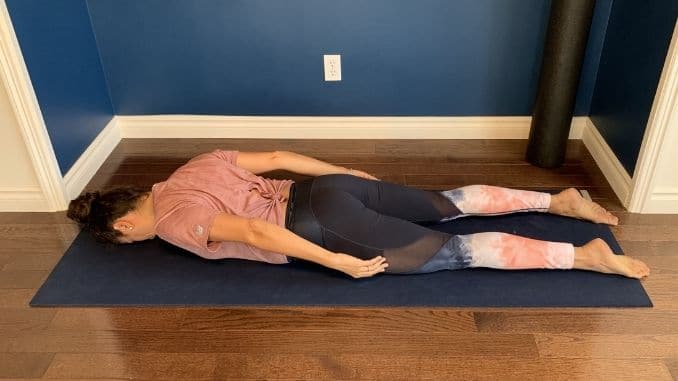
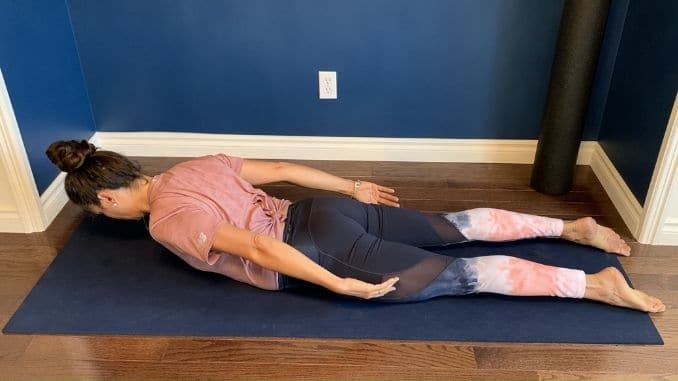 Good posture is incredibly important for your health and well-being, especially as you age. We hope you try out and enjoy these four posture correction exercises. If you have any questions, reach out to our support team anytime at [email protected].
Good posture is incredibly important for your health and well-being, especially as you age. We hope you try out and enjoy these four posture correction exercises. If you have any questions, reach out to our support team anytime at [email protected].
Learn the best way to fix your posture once and for all. Click here for more information.


